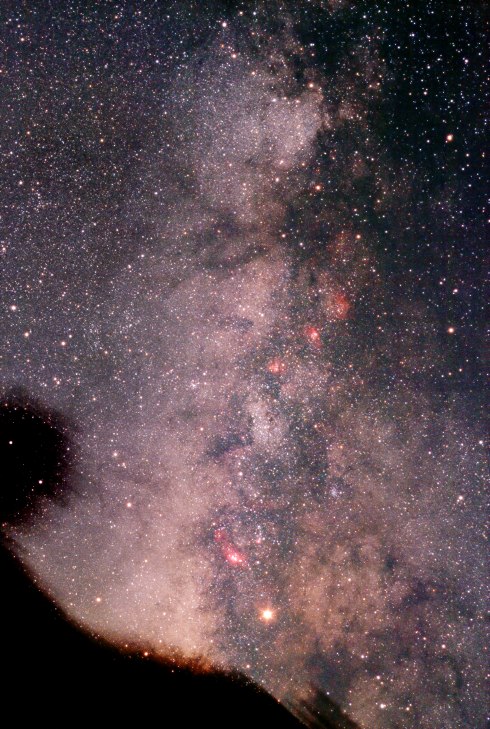
The Milkyway consists of myriads of stars concentrated towards the plane of our galaxy and seen from within. The sun is located in the plane at a distance of about 8.5 kpc (30.000 light years) from our galaxy's center, which is situated towards the constellation Sagittarius. Sagittarius can be seen for mid-northern lattitudes low in the southern sky during summer nights, near the lower edge on this photograph. The center of our galaxy can, however, not be seen directly as a lot of gas and dust obscures our line-of-sight, the broad dark lane running in north-southern direction towards the right side of the photograph is such a streak of gas and dust material. Some red emission nebulae and star clusters are superimposed on it, these are near "foreground" objects. The emission nebulae are, from bottom to top: M8, the Lagoon Nebula and M20, the Trifid Nebula, M17, the Omega or Swan Nebula, M16, the Eagle or Starqueen Nebula and NGC 6604. There are also some star clouds (dense regions of stars in the Milkyway not obscured by dust): M24, the Small Sagittarius Star Cloud below the center of the photograph and the Scutum Star Cloud near the top.
The summer of 2001 added another attraction to the Summer Milkyway: The planet Mars, the "gem" near the bottom of the photograph.
 Milkyway in Sagittarius, telelens photograph.
Milkyway in Sagittarius, telelens photograph.
 M11 - Wild Duck Cluster, Wright-Newtonian photograph.
M11 - Wild Duck Cluster, Wright-Newtonian photograph.
 Mars Gallery.
Mars Gallery.
Exposure Data